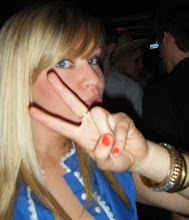Women’s football….on a level playing field?
The women’s Premier League Cup semi-finals take place today, with Preston North End Ladies taking on Doncaster Rovers Belles and Arsenal Ladies taking on Chelsea Ladies. The Northern contingent of the semis play at the 15,000 seater Keepmoat Stadium, where a full house is unlikely. Neither game will be seen on TV, nor can you expect much press coverage tomorrow when the results are in.
Let’s compare this to the men’s equivalent of the Premier League Cup, The Carling Cup. For starters, the games are played over two legs, giving the clubs more opportunity for revenue. Last year’s semis saw Chelsea beat Everton 3-1 on aggregate, with both Goodison Park and Stamford Bridge being sell-outs for its corresponding fixture. The other semi saw Tottenham thrash Arsenal 6-2, with a crowd almost hitting 40,000 and fans all over the world able to watch the game on satellite TV.
When it comes to men’s and women’s football, it certainly isn’t a level playing field. In the Premier League, there are players like Cristiano Ronaldo and Frank Lampard who see £60,000 drop into their bank accounts every week, where in the women’s Premier League, some players aren’t even professional, still having to work two jobs to afford to live.
Women’s football fans are lucky to see a live ladies game every few months, if that. Compare this to men’s football, where on three or four days a week you can flick on to Sky Sports, Setanta, ITV or BBC and be able to watch live games or highlights. The gulf between men’s and women’s football is massive. But why is this?
Paul Green, First Team Assistant Manager at Doncaster Rovers Belles thinks that sponsorship is a major factor. ‘I think that it’s due to media coverage and it not being in the public eye as much, so to speak. Therefore big sponsors aren’t as interested in backing it as at present they don’t get much back for their money’.
Many British women footballers have been lured over the Atlantic to play soccer in the USA, where in some respects it is bigger than the men’s game. The new Women’s Professional Soccer League saw millions glued to their TV screens to watch the teams being drafted, with a live phone in afterwards on Fox Sports. Their revamped league aims to lure the best female footballers to the US, including our own Kelly Smith and Karen Carney, who both currently play for Arsenal Ladies.
Nicky Harding, a 25-year-old Blackburn Rovers Ladies player, spent three months of her career playing in America, for the New Hampshire Lady Phantoms. After explaining that she always wanted to be a pro footballer, she admitted that she can’t see women’s football ever being as big as men’s. ‘You could see with the women’s world cup, England did well to get to the Quarter-Finals, but not many people were interested in that’. The 2007 World Cup was expected to ignite more worldwide interest in women’s football, but despite the games being broadcast live, and despite England’s excellent performance in reaching the quarter-finals, enthusiasm for English women’s football lessened as soon as the World Cup finished.
Many changes need to be made to the way women’s football is handled, to encourage more interest and enthusiasm. ‘There needs to be more media coverage to help raise the profile and I think that this will come with the change over of women’s football into being a summer league’, said Paul Green. The FA have announced that in the summer of 2010, a new women’s 8-team Super League will come into action, where players will be given better contracts to help them financially and to avoid them being lured over to the USA. The fact that the league will be played over the summer, when no other top-flight football is being played, is hoped to be a major factor in bringing in viewers and encouraging more interest in the sport. It is also hoped that any increased interest in the sport will see grassroots participation level increase, and like men’s football, girls from a very young age will be brought up playing football and wanting to take it on as their career.
Whether this theory will come into practice, is yet to be seen. But the introduction of the Women’s Super League can be seen as nothing but a positive in attempting to bring women’s football to the fore. Maybe in twenty years time the women’s equivalent of Cristiano Ronaldo will be as rich and famous as he is now? Only time will tell.
Monday, 8 December 2008
Subscribe to:
Post Comments (Atom)

No comments:
Post a Comment